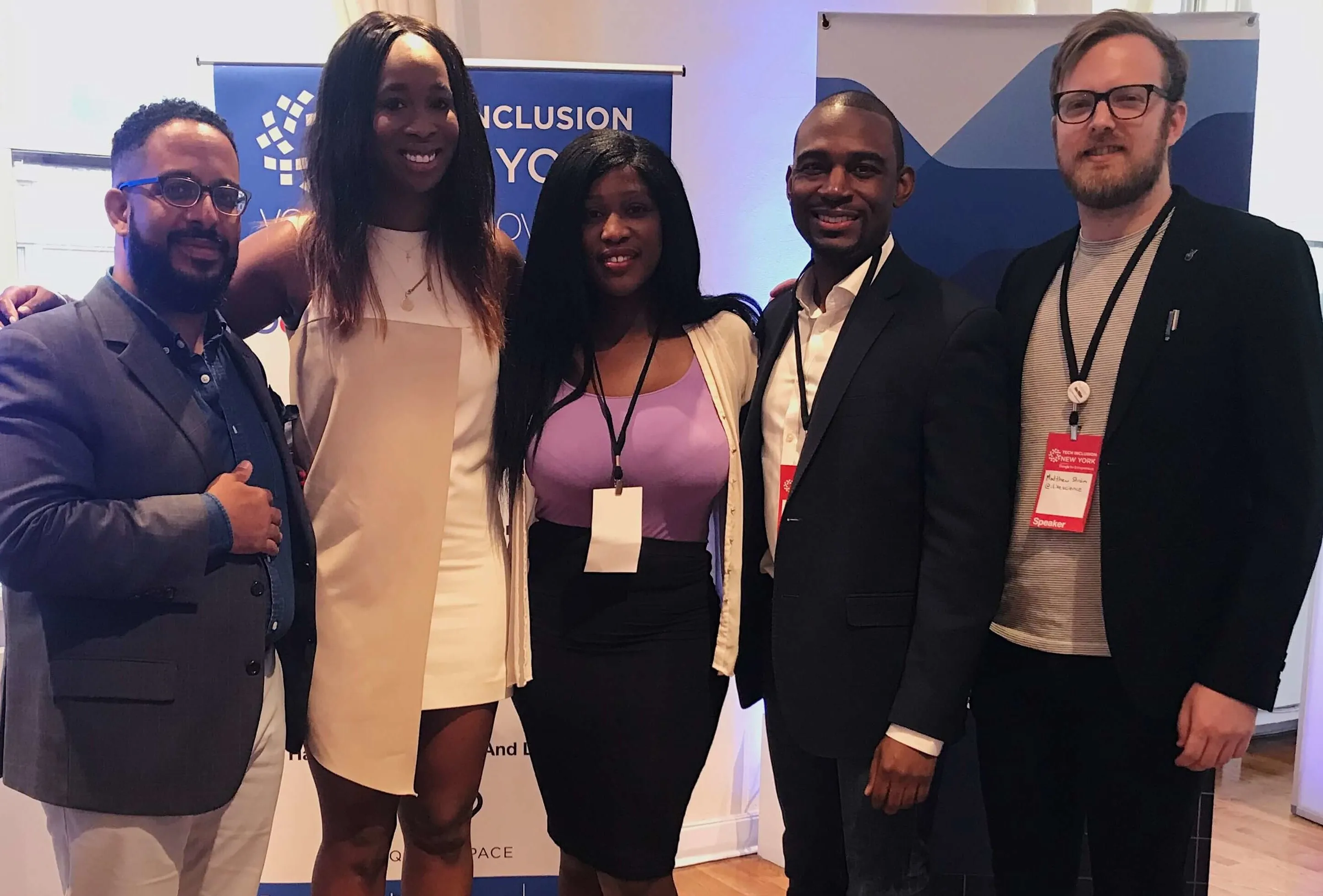· 3 min read Posted by Touchlab
Touchlab Partner Jeff Namnum @ Tech Inclusion NYC 2018

Last week, Google’s third annual Tech Inclusion conference in New York brought folks who are leading efforts to build the innovate technologies and cultures of our future together with those who care to discuss solutions to diversity and inclusion in the tech industry.
One seldomly discussed form of diversity and inclusion is mobile development. Often, organizations will develop an app for iOS first, Android second. This exclusionary development process has implications for diversity and inclusion in tech because it omits certain users initially. Touchlab is an early pioneer in multiplatform development, which enables engineers to build iOS and Android apps at the same time. This is more efficient and inclusive as it allows for organizations to release iOS and Android apps simultaneously.
Jeff brought this unique perspective to “The Future of Products, Ethics, Inclusion, and Innovation” panel, in which four panelists explored what it means to create new, more inclusive products for a diverse global audience and how crucial that effort will be for the future of the tech industry.

From Left: Jeff Namnum, Annie Jean-Baptiste, Netta Jenkins, Gary Johnson, and Matthew Ström
5 TAKEAWAYS
1.
Multi-platform is a form of inclusion: “[At Touchlab] we firmly believe that if you’re making digital products, your defaults are your ethics. Your default settings show your ethics more than your statements do.”
JEFFREY NAMNUM (@NAMNUM)
PARTNER, TOUCHLAB
2.
It’s not just the sob story or the right thing to do…there’s a business case for inclusion: “_You’re leaving untapped opportunity on the table if you’re not thinking about the multitude of users that have a diversity of perspectives. You need to make sure you are constantly getting feedback information from different types of people in all phases of the process. And you need to make sure you have a wholistic, more accurate perspective of who your [target] user is.”
ANNIE JEAN BAPTISTE (@@Its_Me_AJB)
GLOBAL PRODUCT INCLUSION EVANGELIST, GOOGLE
3.
Ongoing efforts are required: “It starts with the product ideation sessions—[there] has to be partnering with external organizations as well and bringing them in to test the products as opposed to just relying on [your] employee base and that’s it.”
NETTA JENKINS (@NETTAJENKINS)
DIRECTOR AND HEAD OF DIVERSITY AND INCLUSION, IAC APPLICATIONS
4.
Employees need to understand what inclusive digital practices look like: “Being really cognizant of the training and the lexicon of how to approach these conversations is important before we even get to product development.”
GARY JOHNSON (@GARY_J5)
DIRECTOR OF STRATEGY & OPERATIONS, NYC MAYOR’S OFFICE OF THE CTO
5.
Your organization’s problems are your products problems and your product’s problems are your organization’s:_ “If you don’t value inclusion, representation, diversity, and ethics, then your products are going to reflect that. Taking a mindset of inclusion with your products will make the product better for everybody who uses it, not just for the people who are directly benefitting from accessibility work.”
MATTHEW STRÖM (@ILIKESCIENCE)
DESIGN DIRECTOR, THE WALL STREET JOURNAL